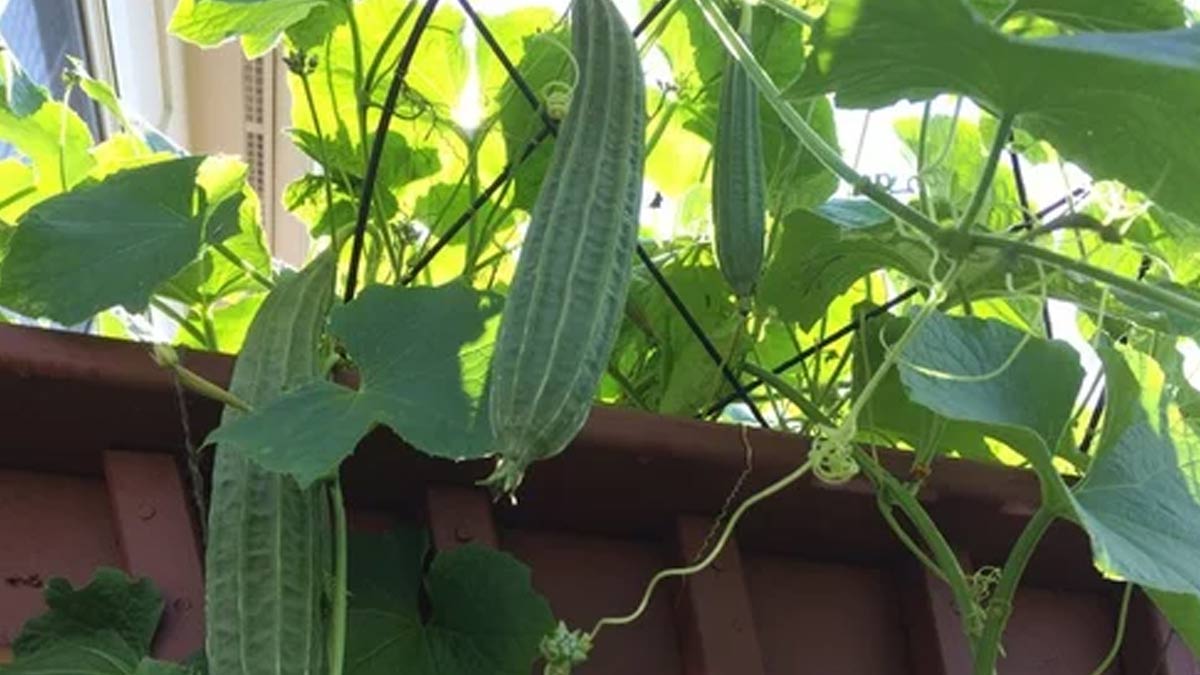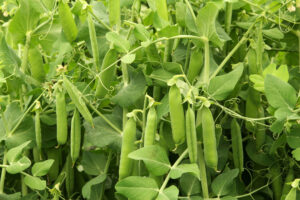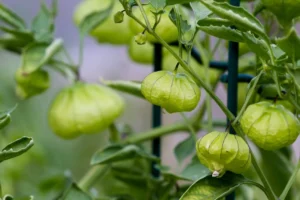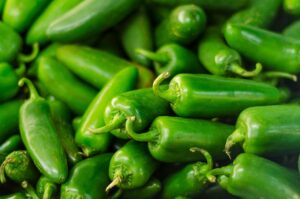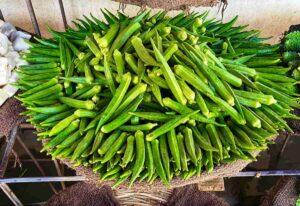How to Grow and Use Culinary Ridge Gourd: A Complete Guide
Ridge gourd (Luffa acutangula), also known as Chinese okra or angled luffa, is a versatile vegetable that’s gaining popularity in the US culinary scene. With its mild flavor and exceptional nutritional profile, this climbing vine can be a valuable addition to your home garden. This guide will walk you through everything you need to know about growing ridge gourd at home, whether in your garden, in pots, or even indoors.
What is Ridge Gourd?
Ridge gourd is a tropical vine from the Cucurbitaceae family, related to cucumbers and squash. Its distinctive feature is the ribbed, elongated fruit with firm flesh that softens when cooked. In the US market, ridge gourd is becoming increasingly sought-after, especially in areas with growing Asian American communities and among health-conscious consumers looking to diversify their vegetable intake.
According to the USDA Agricultural Research Service, ridge gourd is not only edible when young but can also be dried and used as a natural sponge when mature. This dual-purpose quality makes it an economical choice for home gardeners.
Growing Conditions for Ridge Gourd
Before you begin growing ridge gourd, it’s important to understand its ideal growing conditions:
Climate Requirements
Ridge gourd thrives in warm temperatures between 75°F and 85°F (24°C-29°C). As a tropical plant, it’s sensitive to frost and requires a long, warm growing season of at least 3-4 months. In the US, this means:
- USDA Zones 7-11: Outdoor growing during summer months
- Zones 4-6: Starting indoors and transplanting after all frost danger has passed
- Indoor growing: Possible year-round with proper lighting and temperature control
Soil and Light Requirements
For optimal growth, ridge gourd needs:
- Soil: Well-draining, fertile soil with pH 6.0-6.8
- Light: Full sun (at least 6-8 hours of direct sunlight daily)
- Water: Consistent moisture without waterlogging
How to Grow Ridge Gourd from Seeds
Growing ridge gourd from seeds is straightforward if you follow these steps:
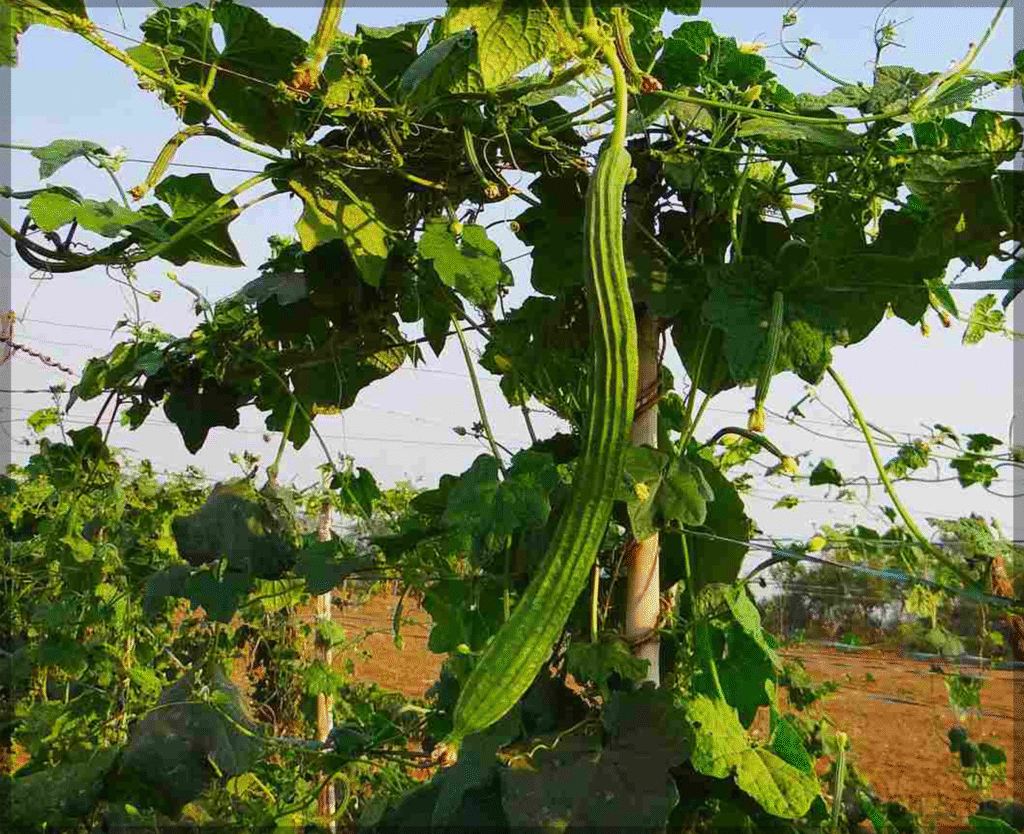
Starting Seeds Indoors
- Timing: Start seeds indoors 4-6 weeks before the last frost date in your area
- Seed preparation: Soak seeds in warm water for 24 hours to improve germination
- Planting: Sow seeds 1/2 inch deep in seed-starting mix
- Temperature: Maintain soil temperature around 75°F (24°C) using a heat mat if necessary
- Germination: Expect seedlings within 7-14 days
Direct Sowing Outdoors
In warmer regions (USDA Zones 8-11), you can directly sow ridge gourd seeds:
- Timing: Wait until soil temperatures reach at least 70°F (21°C)
- Spacing: Plant seeds 2-3 feet apart in rows 5-6 feet apart
- Depth: Sow seeds 1/2 inch deep
- Watering: Keep soil consistently moist until germination
Growing Ridge Gourd in Containers
Don’t have garden space? Ridge gourd can successfully grow in containers:
Container Requirements
| Container Feature | Recommendation |
|---|---|
| Size | Minimum 5-gallon (larger is better) |
| Material | Plastic, fabric, or ceramic with drainage holes |
| Depth | At least 12 inches |
| Width | At least 12 inches diameter |
| Trellis height | 6-8 feet |
Container Growing Steps
- Select an appropriate container (see table above)
- Fill with quality potting mix enriched with compost
- Install a sturdy trellis or support structure
- Plant 2-3 seeds per container, thinning to the strongest plant
- Place in a sunny location that receives 6+ hours of direct sunlight
- Water consistently, allowing the top inch of soil to dry between waterings
Growing Ridge Gourd Indoors
Living in a cooler climate or have limited outdoor space? You can grow ridge gourd indoors:
Indoor Growing Requirements
- Light: South-facing window or grow lights providing 10-12 hours of light daily
- Temperature: Maintain 70-85°F (21-29°C)
- Humidity: 50-70% humidity (use a humidifier if needed)
- Pollination: Hand-pollinate flowers as indoor pollinators are absent
- Support: Provide vertical support or train vines along window frames
Hand Pollination
Ridge gourd produces separate male and female flowers on the same plant. To hand pollinate:
- Identify male flowers (thin stem) and female flowers (with tiny ridge gourd behind the petals)
- Remove a male flower and rub its center (anther) against the center (stigma) of female flowers
- Pollinate in the morning when flowers are freshly opened
Care and Maintenance
Watering and Fertilizing
Ridge gourd requires consistent care throughout its growing cycle:
- Watering: Provide 1-2 inches of water weekly, more during extreme heat
- Fertilizing: Apply balanced organic fertilizer (10-10-10) at planting time
- Side dressing: Add compost or balanced fertilizer when flowering begins
- Mulching: Apply 2-3 inches of organic mulch to retain moisture and suppress weeds
Supporting Ridge Gourd Vines
As a climbing vine, ridge gourd needs proper support:
- Trellis: Install a 6-8 foot trellis at planting time
- Training: Gently guide young vines onto the support structure
- Alternatives: Use tomato cages (for bush varieties), stakes, or fence lines
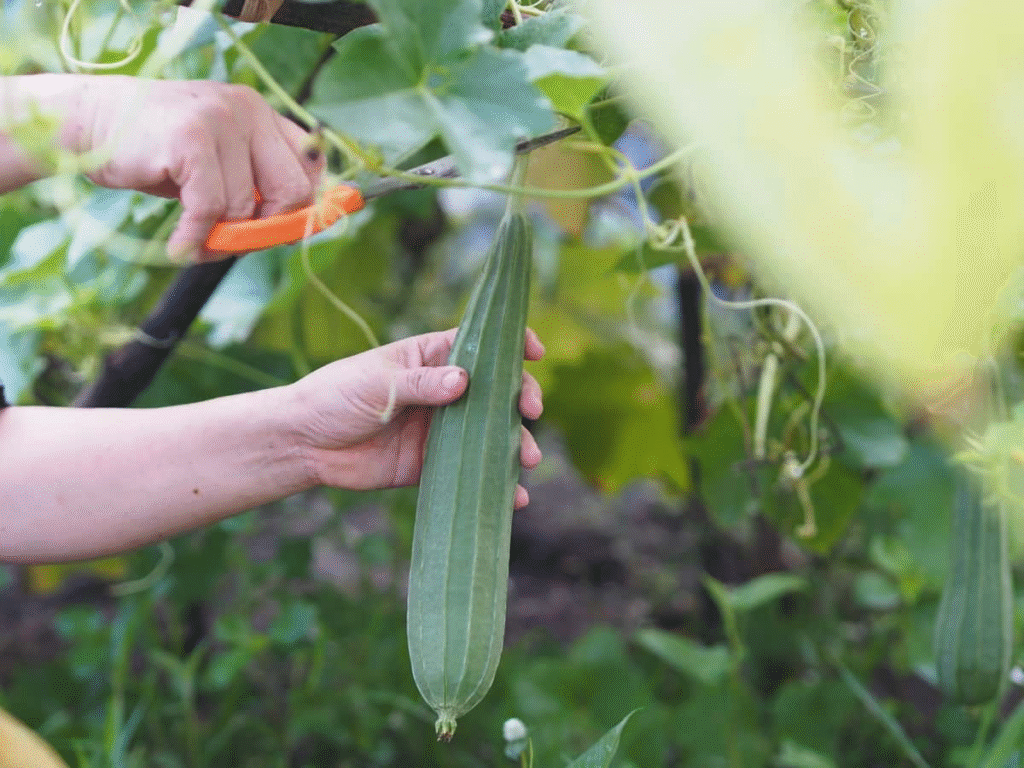
Pest and Disease Management
Common issues and organic solutions include:
- Cucumber beetles: Use floating row covers or neem oil spray
- Powdery mildew: Ensure good air circulation and apply diluted milk spray (1:10 ratio)
- Vine borers: Wrap stems with aluminum foil at soil level
- Aphids: Spray with insecticidal soap or strong water jet
Harvesting Ridge Gourd
When to Harvest
For culinary use, harvest ridge gourds when they are:
- Size: 6-12 inches long (varies by variety)
- Appearance: Dark green with pronounced ridges
- Texture: Firm but not hard
- Age: Typically 7-10 days after fertilization
Harvesting too late results in fibrous, tough gourds better suited for sponge production than eating.
How to Harvest
- Use clean, sharp pruners or a knife
- Cut the stem 1/2 inch above the fruit
- Harvest in the morning when temperatures are cooler
- Handle gently to avoid bruising
Culinary Uses of Ridge Gourd
Ridge gourd is a versatile vegetable in the kitchen:
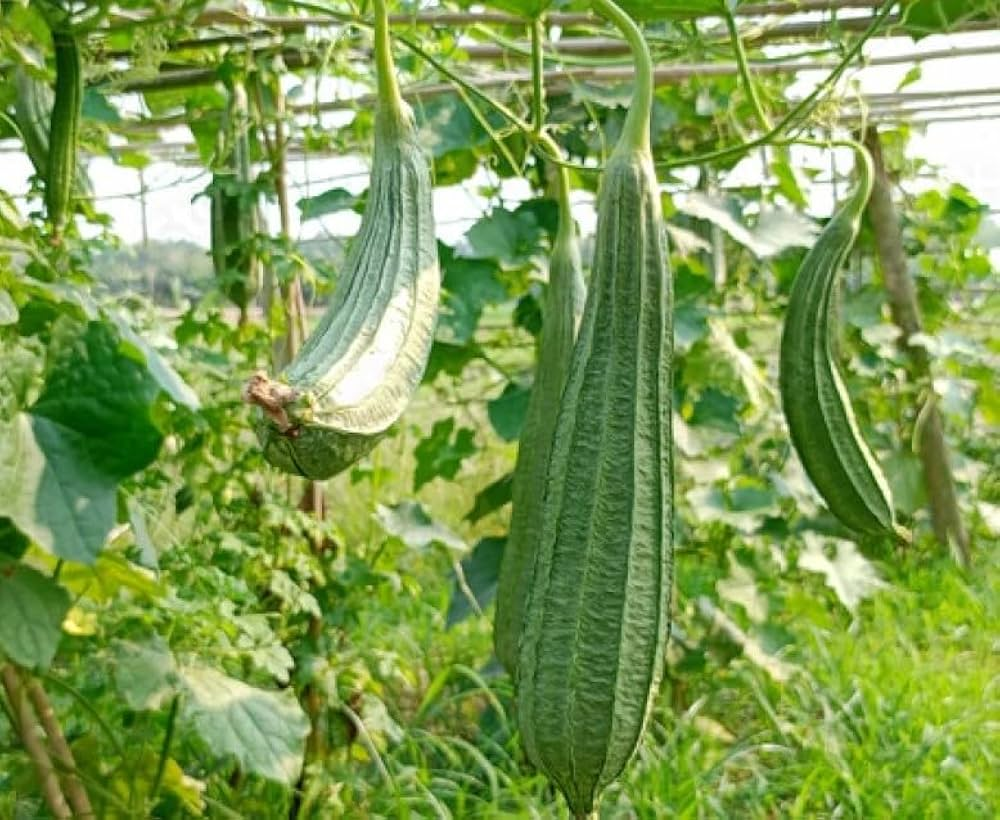
Preparation Tips
- Young gourds: No need to peel; simply wash, remove ends, and slice
- Mature gourds: Peel the tough outer skin before cooking
- Seeds: Remove seeds from mature gourds before cooking
Popular Culinary Applications
- Stir-fries: Quick-cooked with minimal seasonings to maintain texture
- Soups and stews: Absorbs flavors well in longer-cooking dishes
- Curries: Popular in South and Southeast Asian cuisines
- Sautéed side dishes: Simple preparations with garlic and herbs
- Pickled: Preserved in vinegar with spices for a tangy condiment
Saving Seeds for Next Season
To maintain your ridge gourd supply year after year:
- Selection: Allow 1-2 healthy fruits to fully mature on the vine
- Harvesting: Wait until the gourd turns yellow-brown and dries
- Extraction: Cut open the dried gourd and remove seeds
- Cleaning: Rinse seeds and dry thoroughly on paper towels
- Storage: Keep in paper envelopes in a cool, dry place for 2-3 years of viability
US Market and Growing Popularity
Ridge gourd is steadily gaining traction in the US:
- Farmers markets: Increasingly available at markets in diverse urban areas
- Specialty grocers: Found in Asian markets and some health food stores
- Restaurant demand: Growing interest from chefs exploring global cuisines
- Home gardeners: Popular among gardeners looking for unique vegetables
According to the National Agricultural Statistics Service, specialty vegetable crops like ridge gourd are seeing growing demand as American consumers expand their culinary horizons.
Conclusion
Growing ridge gourd at home—whether in your garden, containers, or indoors—provides you with a nutritious, versatile vegetable that’s still considered somewhat exotic in the US market. With proper care and attention to its tropical nature, you can successfully cultivate this climbing vine and enjoy its unique culinary properties. As interest in global cuisines continues to grow across the United States, having fresh ridge gourd at your fingertips puts you ahead of the culinary curve.
Start with quality seeds, provide plenty of warmth and support, and you’ll be harvesting your own ridge gourds within a few months. The satisfaction of growing this distinctive vegetable, combined with its versatility in the kitchen, makes ridge gourd a rewarding addition to your home gardening repertoire.
